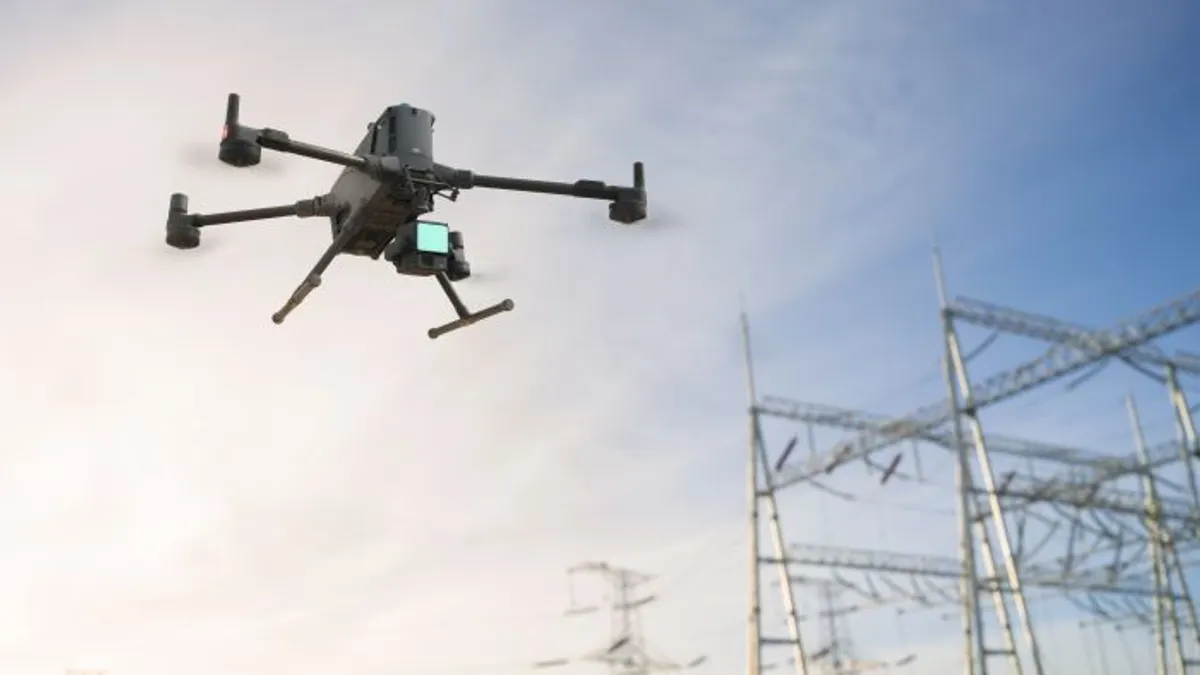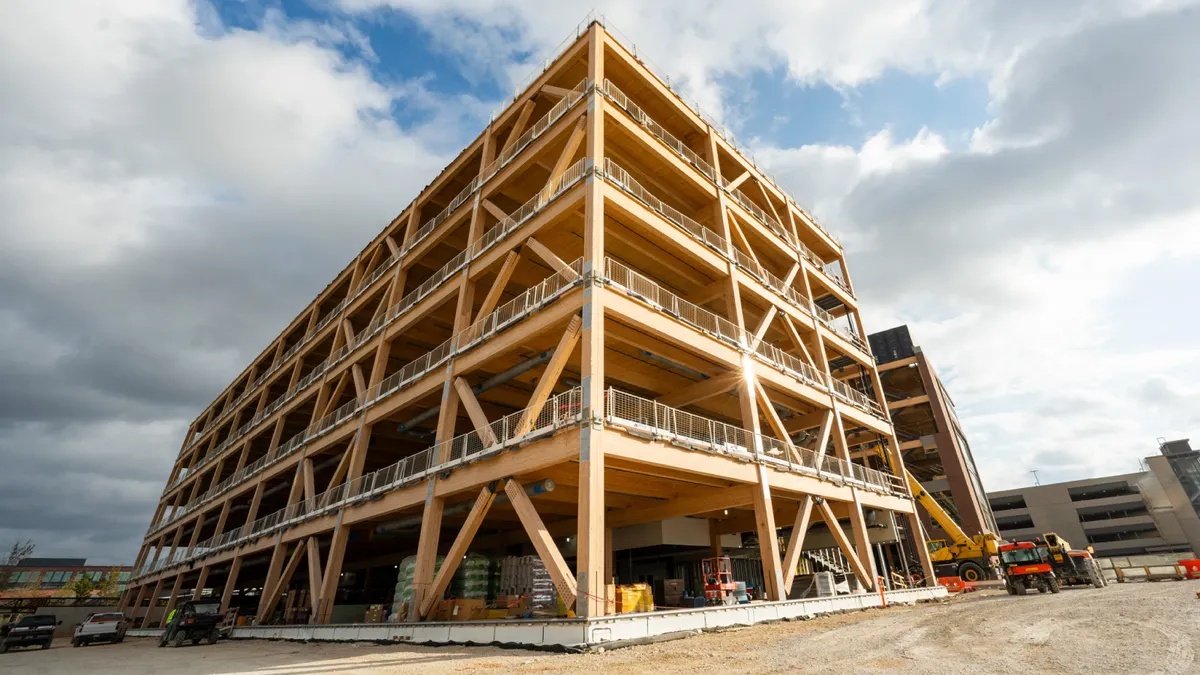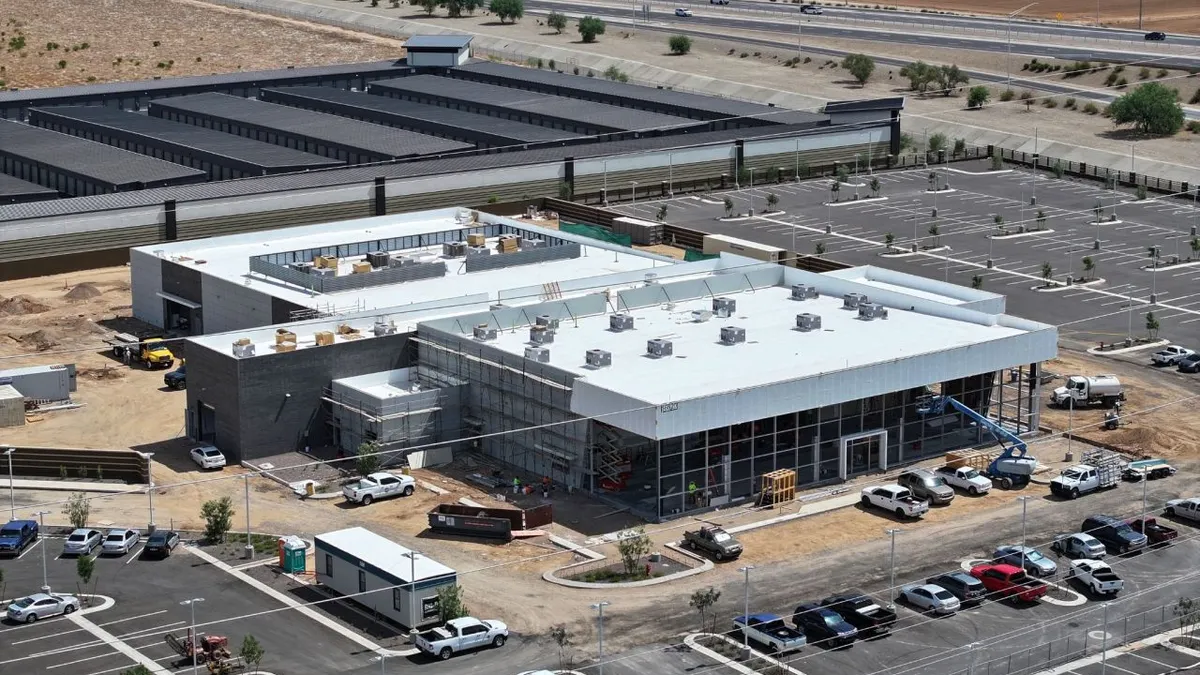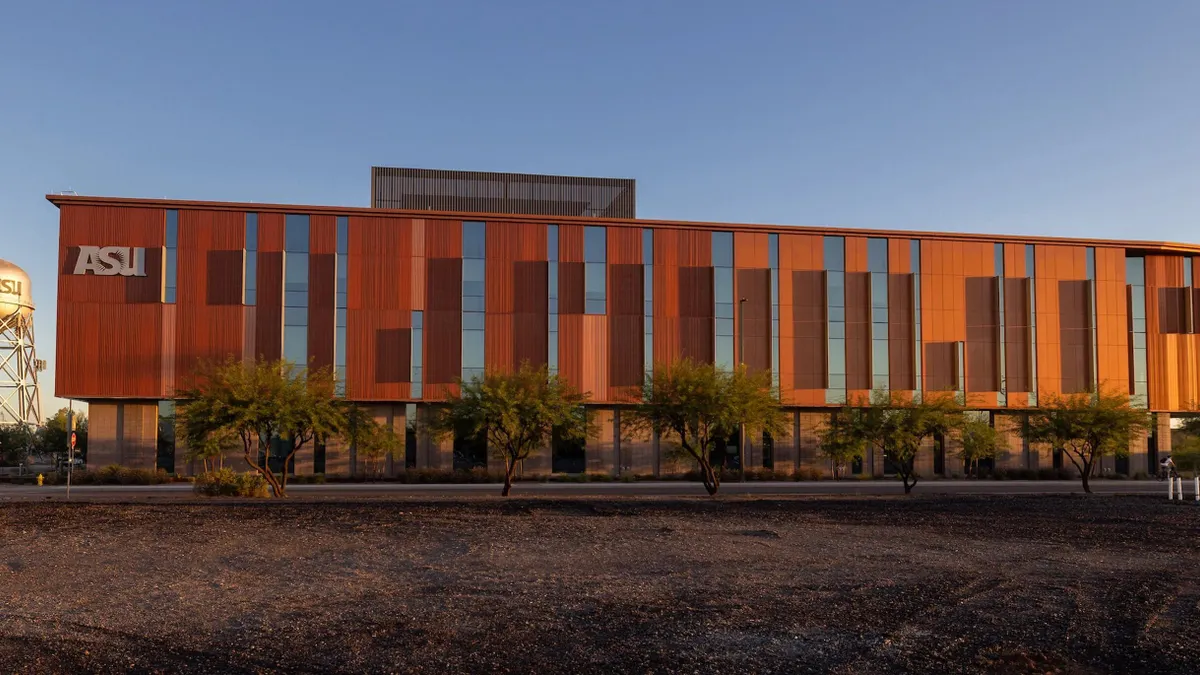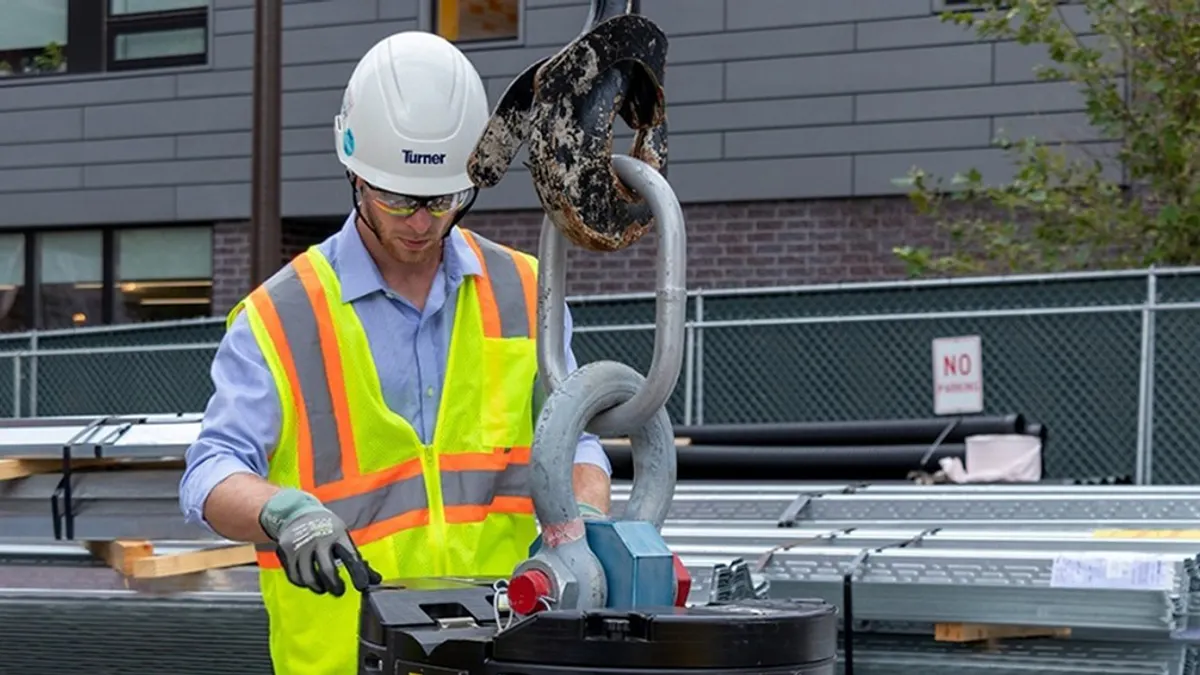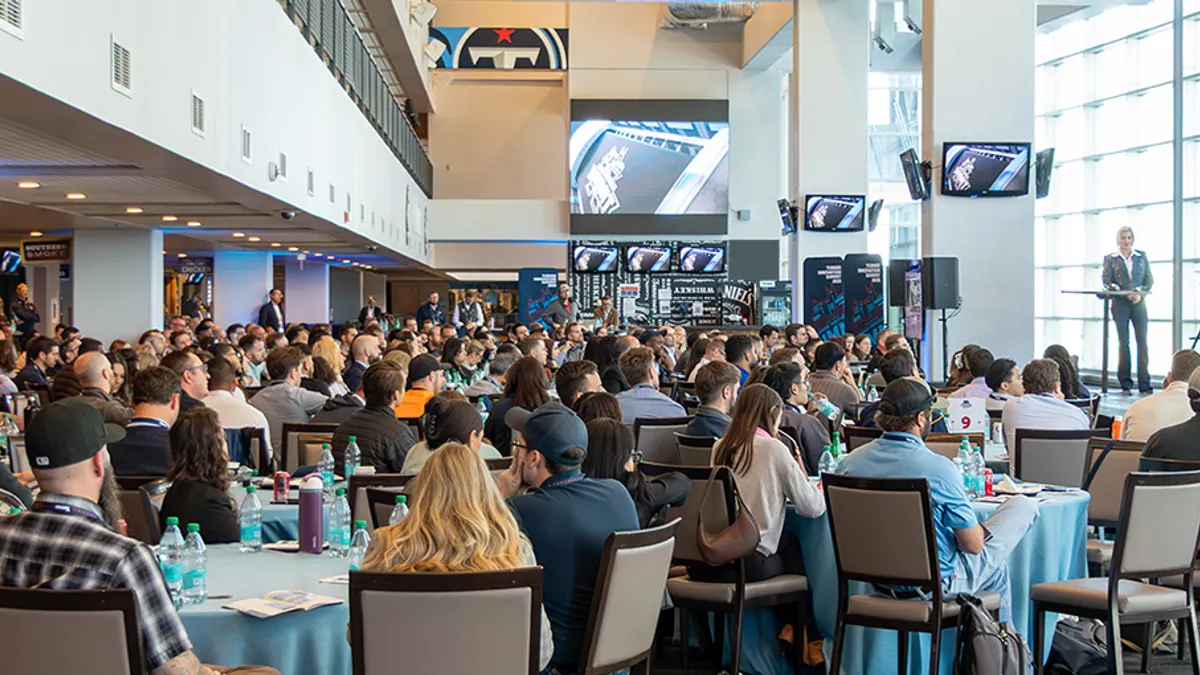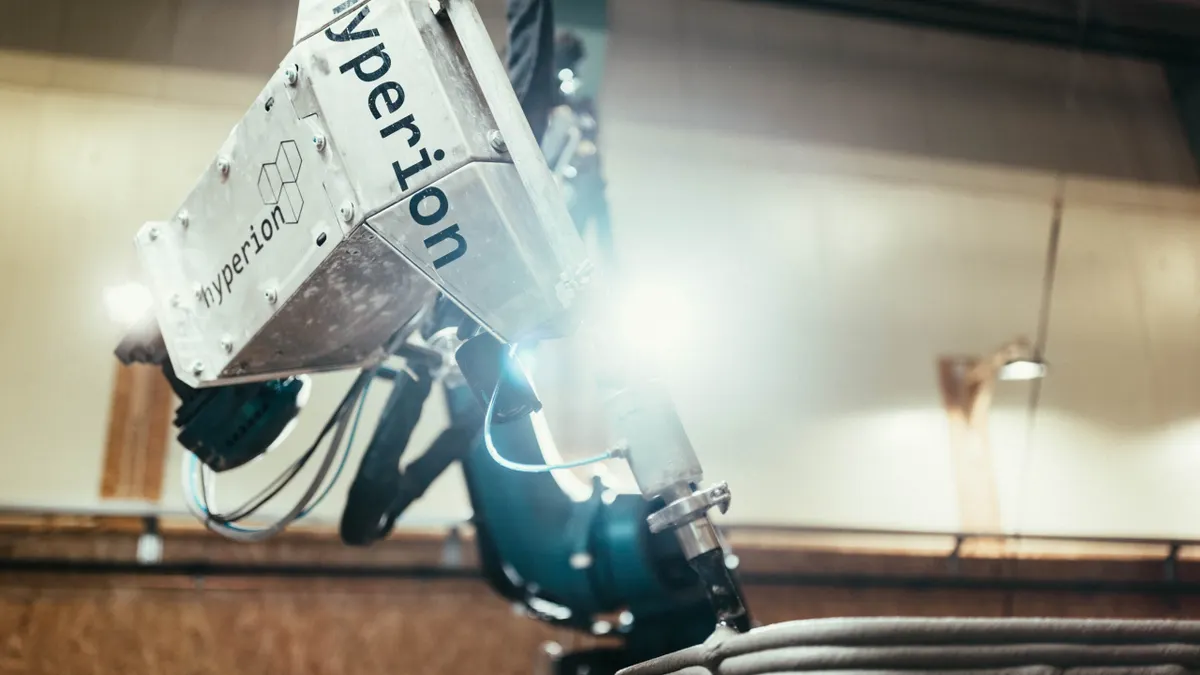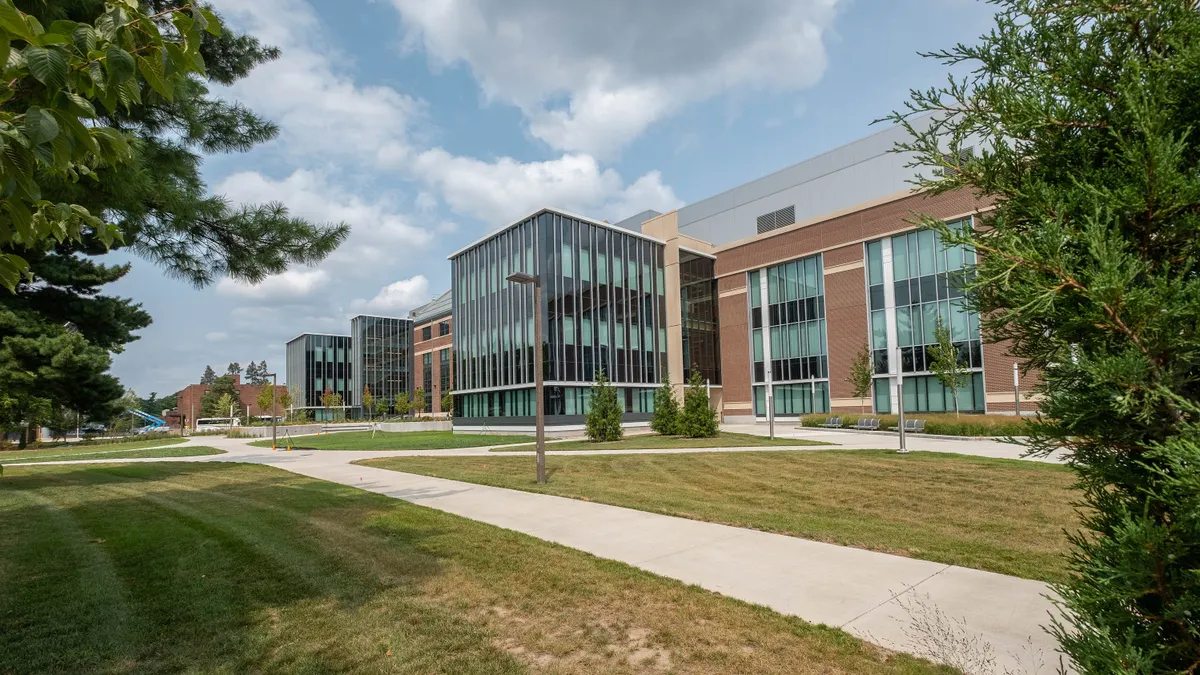From a durable, long-running drone to software that lets pros compile a comprehensive visual record, the latest construction technology releases provide a range of services and solutions to help make building easier.
Here, Construction Dive breaks down five of the latest products and enhancements to recently hit the market:
DJI
Drone and camera tech provider DJI has introduced its Matrice 400 drone, which boasts a 59-minute flight time, a payload capacity of up to 6 kilograms and an obstacle-sensing system that relies on LiDAR and millimeter wave radar. The Matrice 400 can aid construction, emergency response, power line inspections, large-scale mapping and engineering, according to DJI.
The unit can operate in harsh environments and extreme temperatures from -20°C to 50°C, the firm said. In addition, its fusion positioning system allows it to fly close to glass facade buildings or wind turbine blades.
Smart AR projection makes it easier for operators to navigate challenging terrain with a remote control, DJI claims. For example, when the obstacle-sensing system detects power lines, the system creates an easily recognizable display on the remote control. Also, the remote control can display the names of buildings and landmarks in real-time, marking core roads with prominent lines when using the system’s built-in map view, according to the news release.
Egnyte
Egnyte’s new artificial intelligence-powered Project Hub is designed to solve documentation and coordination challenges. It enables consistent, secure collaboration and oversight in an intuitive structure throughout the project lifecycle, according to the news release.
New and updated features include a customizable project setup wizard that enables firms to set up a standardized folder structure from the start. Beta customers report that the new tool saved them significant time and resources, according to the firm.
In addition, project folder templates automatically create a project dashboard and pre-defined folder structures, enforcing consistent naming conventions and permissions, and scaling best practices across the organization.
“The Project Hub acts as a central repository for all project data, providing users with real-time, comprehensive insights into their projects, storing everything from design files to field data,” said Prasad Gune, chief product officer at Egnyte, in the release.
Bluebeam
AEC solutions provider Bluebeam has unveiled a set of product updates that include a new integrations directory, which provides a centralized hub for Bluebeam users to connect with third-party apps and plugins. These include Procore Documents, Microsoft SharePoint, Autodesk Construction Cloud and Vectorworks. All subscription plans can use the feature, according to the news release.
With this latest release, the company’s Revu application now runs natively and 30% faster on ARM-based devices like Microsoft Surface tablets and via Parallels on Apple M-series Macs. These updates ensure that teams working across modern hardware platforms can open, navigate and mark up complex documents more efficiently while making it easier for Mac users to run Revu natively via Parallels, the company said.
OpenSpace
Reality capture solutions provider OpenSpace has launched OpenSpace Air, which enables construction teams to consolidate all reality data — from drones, 360-degree cameras, mobile phones and laser scanners — into a comprehensive visual record accessible from a single platform.
By pairing aerial imagery with interior reality capture, OpenSpace Air equips teams with a powerful tool to improve planning accuracy and keep projects on track, the firm says. The product is included in every OpenSpace subscription.
“With the drone data integration from OpenSpace, we can now expand outside the four walls of a building to show things that we weren’t able to see before, from an extremely valuable perspective,” said Scott Wyatt, project executive at Gilbane Construction, in the release. “Overall, being able to identify items on the project earlier and create efficiencies in our platforms is a big win.”
Brickeye
Toronto-based jobsite risk mitigation provider Brickeye has launched BuildersRiskIQ, a digital dashboard designed to help builders mitigate construction risk and secure builders risk insurance coverage.
BuildersRiskIQ allows stakeholders to visualize and securely share project-specific Internet of Things water mitigation plans, backed by Brickeye’s certificate of protection. This proactive, tech-enabled approach strengthens insurance submissions, giving underwriters increased confidence and enabling insured firms to reduce water loss deductibles by up to 50%, which can significantly lower the total cost of risk, according to the news release.
“Industry studies show that IoT protection can reduce water damage exposure on jobsites by up to 90%,” said Alex Fuentes, executive vice president of strategic growth at Brickeye, in the release. “With BuildersRiskIQ, insureds and brokers can now submit committed, IoT-enabled water mitigation plans from the outset, leading to smarter insurance quoting and tangible cost savings.”



